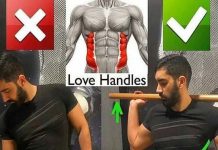🔥 THE SUMO DEADLIFT

💥 I’ve had a few discussions with people regarding the sumo dead-lift and i feel like there is a misconception about the exercise. It seems that people that may be incorporating sumo dead-lifts into their exercise routine may be doing so under the belief the exercise is something it is not.
✅ I think the number one thing falsely assumed about the sumo dead-lift is that it activates the adductor muscles more than a conventional deadlift. Because you feel them being stretched does not mean they’re working. There is no adduction occurring during that exercise, in fact we cue people to abduct the legs to avoid knees caving in.
[wp_ad_camp_2]
🚨 The adductors specifically the adductor magnus/longus act as hip extensors during certain degrees of hip flexion. This is further backed up from an emg study that showed sumo dead-lift led to increased emg activity in (VMO, vastus lateralis, and tib anterior). For this reason if you need to work on strengthening your quads the sumo deadlift may be right for you.

[wp_ad_camp_4]
✅ Sumo deadlifts create less shear stress in the low back due to the difference in position of the bar in relation to the spine. This may be a reason to add this exercise into your routine; if you’re struggling with lower back issue during conventional deadlift it may be right for you.
[wp_ad_camp_3]
✅ One question I always get asked “is the sumo squat less athletic than regular deadlift”, and the answer is yes and no, reason being is it is a great exercise and it has its place in workout routines. However it simply does require less work, a sumo deadlift 25-30% less work than a conventional deadlift. A conventional deadlift lifting the same weight (175kg) 4 sets 8 reps leads to around 111Kcal of expenditure while for a sumo deadlift 91 Kcal. So if your goal is to build power the conventional deadlift might be a better option for you. Should I cover the conventional deadlift next?

















































